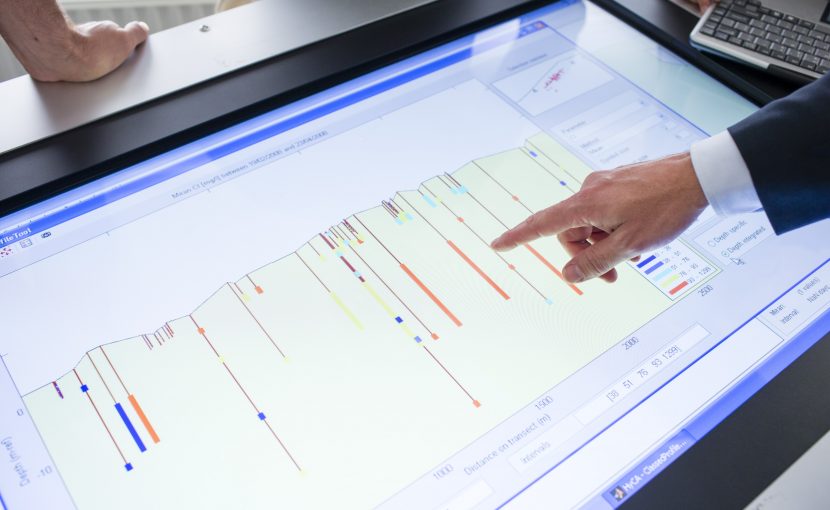Old soil and groundwater contamination is present in many city centres. The installation of aquifer thermal energy storage (ATES) systems in the contaminated aquifers in this soil has an impact on the spreading of the contaminants present. This is certainly the case when there are several ATES systems, each with a number of different extraction and infiltration sources, which can have an influence on each other. Standard software does not allow for the effective modelling of the impact of the presence of several ATES systems. KWR now has developed, within the joint research programme for the water companies, a method which provides a clearer picture of the spreading of contaminants in the presence of several ATES systems. The approach has been applied to the ATES systems and contaminants in Utrecht’s city centre.
Insight into spreading mechanisms
Using data from Vitens and the municipality of Utrecht, a model has been built to show how a point source has spread over most of the area in a period of ten years. One important spreading mechanism is recirculation: the extraction of the contaminants from an extraction source and their subsequent infiltration into another source. Contaminants can also ‘jump’ from one ATES system to another. ATES systems are of course situated outside of each other’s thermal spheres of influence, but since their hydrological spheres of influence are one and a half times bigger that their thermal spheres of influence, the systems can indeed exert an influence on each other . Furthermore, a short-circuit flow can occur between different sources, which accelerates the jumping. Through the combined impact of recirculation and the hydrological sphere of influence, a contaminant can jump from one aquifer thermal energy source to the source of another ATES system hundreds of meters away in a year and a half.
Ten times faster spreading
The presence of ATES systems in Utrecht’s city centre has, according to the model, accelerated the spreading by a factor of ten. This faster spreading caused by the city’s ATES systems only occurs in the area within which the systems influence each other hydrologically. Therefore, practically speaking, it has no effect on the quality of Vitens’s drinking water abstraction operations, since these are located far outside of Utrecht.
Area-specific approach to groundwater contamination
The insights gained can provide support and direction to the area-specific management of contaminated groundwater, and for the integration of ATES systems in spatial planning. Thus one could optimise the (further) spatial integration of ATES systems in line with the area-specific circumstances. The mixing and dilution of contaminants due to ATES systems can, for example, be influenced on the basis of weighted risks.
